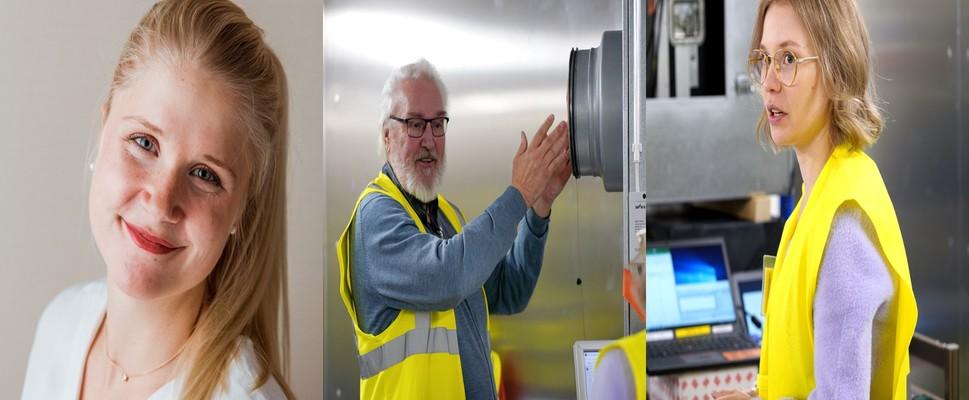The Covid-19 made it clear that people can spread viruses in very different ways. The multidisciplinary E3 Excellence in Pandemic Response and Enterprise Solutions project, in which Helsinki University Hospital (HUS) is one of the partners, studies the routes and spreading of airborne viruses. One of the most pressing questions right now is to identify if some characteristics or qualities in a person make them emit more pathogens than the others. Top Finnish opera singers joined in the study to help find answers to this question in Tampere.
Aerosol chamber collects valuable data on the emissions of singers
Over 30 Finnish top opera singers attend an ongoing experimental study set up together by HUS, Tampere University, Tampere University of Applied Sciences (TAMK) and VTT. The study explores the professional singer’s ability to cough, articulate and sing in a manner that could reveal their inclination to emit aerosols. After this singing exercise, the singers travel to the HUS Phoniatrics Clinic for fiberoscopy. This part of the study will certainly be very interesting for singers themselves who get to see their own instrument in action.
The first part of the study is conducted in a special aerosol chamber based on the first version built by Physics Lecturer Sampo Saari and his students at TAMK and now set up at the VTT premises. It is used for capturing all the aerosols that the singers produce during the experiments. The main leaders of the research are clinician Anna Tuhkuri Matvejeff (HUS) and Saari (TAMK).
Why opera singers?
The presumption in the study is that the louder a person sings, the higher the amount of emissions. It is assumed that persons with longer and stronger vocal cords emit more aerosols. The E3 study aims to reveal more and after the experiments are complete, there will be a lot of data for analysis.
“Opera singers have a very steady voice, and they can also produce a wide variety of sounds,” explains HUS E3 manager, clinician Enni Sanmark, who is one of the persons involved in the study as Tuhkuri Matvejeff’s Ph.D. supervisor. She continues: “I think where it started was the unemployment of singers and the desire to study the emission in different registers and volumes. For example, if we notice that a soprano emits a lot of aerosols, we could possibly spot the places where one should protect oneself more.”
Frontline opera singers involved
The E3 project can boast having some of the greatest singers contributing to the study, including a 75-year-old veteran opera star, bass vocalist Jaakko Ryhänen, and soprano Olga Heikkilä. What motivates the singers to participate in this kind of study?
“The essence of a singer revolves around his voice. What else could be more motivating than to get to use my voice for science,” Ryhänen says. He also thinks that singing in different languages produces different amount of aerosols as the articulation is very different in for example in German or Italian languages.
Heikkilä agrees with Ryhänen. “This study is so very important for all of us and for all the performers and I want to be involved. I want to help the science,” she says.
This study is one of the many important multidisciplinary studies made within the E3 project during these 2,5 years that help understand how pathogens spread from and between people. According to Sampo Saari, the project would not be possible without all the multidisciplinary expertise from various fields of science and other experts such as the singers.
More information:
Aamulehti 3.10.2022 (in Finnish): Virusten superlevittäjää etsitään ainutlaatuisessa kammiossa Tampereella
E3-website

